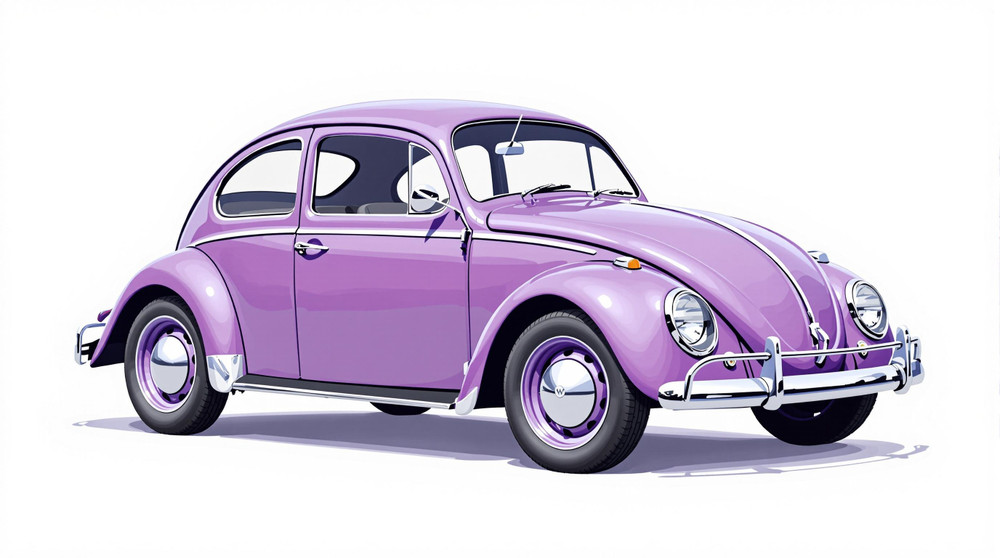Image of 1957 Volkswagen Beetle, Note: These illustrations use artistic license and may differ from actual historical models.
Performance Metrics
Fundamental Metrics
Emotional Appeal
MMP Rating
| Engine Specifications | |
|---|---|
| Engine Options: | Air-cooled, rear-mounted, flat four-cylinder |
| Displacement Range: | 1192 cc |
| Horsepower Range: | 36 hp |
| Torque: | 68 lb-ft |
| Compression Ratio: | 6.6:1 |
| Ignition System: | Distributor ignition system |
| Cooling System: | Air-cooled |
| Performance Specifications | |
| 0-60 Time: | Estimated 30 seconds |
| 1/4 Mile Time: | Not available |
| Top Speed: | 68 mph |
| Transmission and Drive | |
| Drive Type: | Rear-wheel drive |
| Transmission Type: | 4-speed manual |
| Fuel and Efficiency | |
| Fuel System Type: | Carburetor |
| MPG: | 28-32 mpg |
| Dimensions and Brakes | |
| Brakes: | Drum brakes |
| Wheelbase: | 94.5 inches |
| Weight: | 1,675 lbs |
Note: Specifications for classic cars are given to the best of our ability, considering the limited and variant data available.
Introduction
The 1957 Volkswagen Beetle is an emblem of simplicity and charm on four wheels. Born in the tumultuous times of post-war Germany, this vehicle emerged as a symbol of the country's regeneration and economic recovery. The brainchild of Ferdinand Porsche and backed by the vision of Adolf Hitler to create a 'people's car' (Volkswagen in German), the Beetle's unique design and affordability revolutionized the automotive industry. A notable moment in its history was when it surpassed the longstanding production record of the Ford Model T, becoming a global icon in the process.
Design and Innovation
With its distinctive rounded silhouette, the 1957 Beetle's exterior styling is instantly recognizable. Its curved fenders, running boards, and split rear window—a feature that would be replaced by a single oval window later that year—exude a vintage charm that still captures hearts today. Inside, the Beetle was modest yet functional, with high-quality materials that defied its economy car status. Technologically, it boasted an air-cooled rear engine and a robust electrical system. Color options ranged from subdued pastels to vibrant hues, with L41 Black and L378 Diamond Green being popular choices. The most iconic body style was undoubtedly the two-door sedan, which encapsulated the essence of this cultural phenomenon.
Historical Significance
The 1957 Volkswagen Beetle didn't just ferry people from point A to B; it mobilized nations and democratized mobility. Its simple mechanical design made it accessible and repairable in even the remotest parts of the world. The Beetle's air-cooled engine was a marvel of engineering for its reliability and efficiency, setting it apart from liquid-cooled contemporaries. This car's design philosophy influenced generations of automobile designers who sought to create practical and enduring vehicles.
Performance and Handling
The 1957 Beetle might not break any speed records with its top speed hovering around 68 mph, but it was never about raw power—it was about reliability and efficiency. Acceleration from 0-60 mph was a leisurely affair by modern standards, yet adequate for its era. Handling was nimble due to its lightweight construction and rear-wheel drive layout, making it adept at navigating through city streets or cruising on country roads. Driving a Beetle was an experience characterized by the unmistakable hum of its air-cooled engine and the tactile feedback from its slender steering wheel.
Ownership Experience
The Volkswagen Beetle served many roles—from a daily commuter to a rally car, to a beloved showpiece. Its simplicity meant that maintenance could often be performed by owners themselves, fostering a culture of hands-on care and community among enthusiasts. While reliability was one of its strong suits, parts were—and still are—readily available due to the vast number produced.
Fun Facts
The 1957 Volkswagen Beetle has been immortalized in countless ways: from Herbie in "The Love Bug" series to being an art canvas for Andy Warhol. Rare editions like the 'Ovali' with its oval rear window are highly sought after by collectors. Despite criticisms over time for its lack of power or creature comforts compared to modern vehicles, none can deny its place as an automotive icon.
Collector's Information
Today, a well-preserved 1957 Volkswagen Beetle can fetch anywhere from $15,000 to $30,000 depending on condition and originality. With over 21 million Beetles produced throughout its lifetime, early models like the '57 have become increasingly rare finds. Price trends suggest that values are appreciating as nostalgia fuels demand for this timeless classic.
Conclusion
The 1957 Volkswagen Beetle is more than just a car; it's a cultural touchstone that represents innovation, resilience, and simplicity. Its legacy endures in every purr of its engine and gleam of its rounded body—a testament to design brilliance that transcends time. As we reflect on this automotive masterpiece, we're reminded that true greatness often comes in humble packages.
1957 Volkswagen Beetle Catalog of Parts
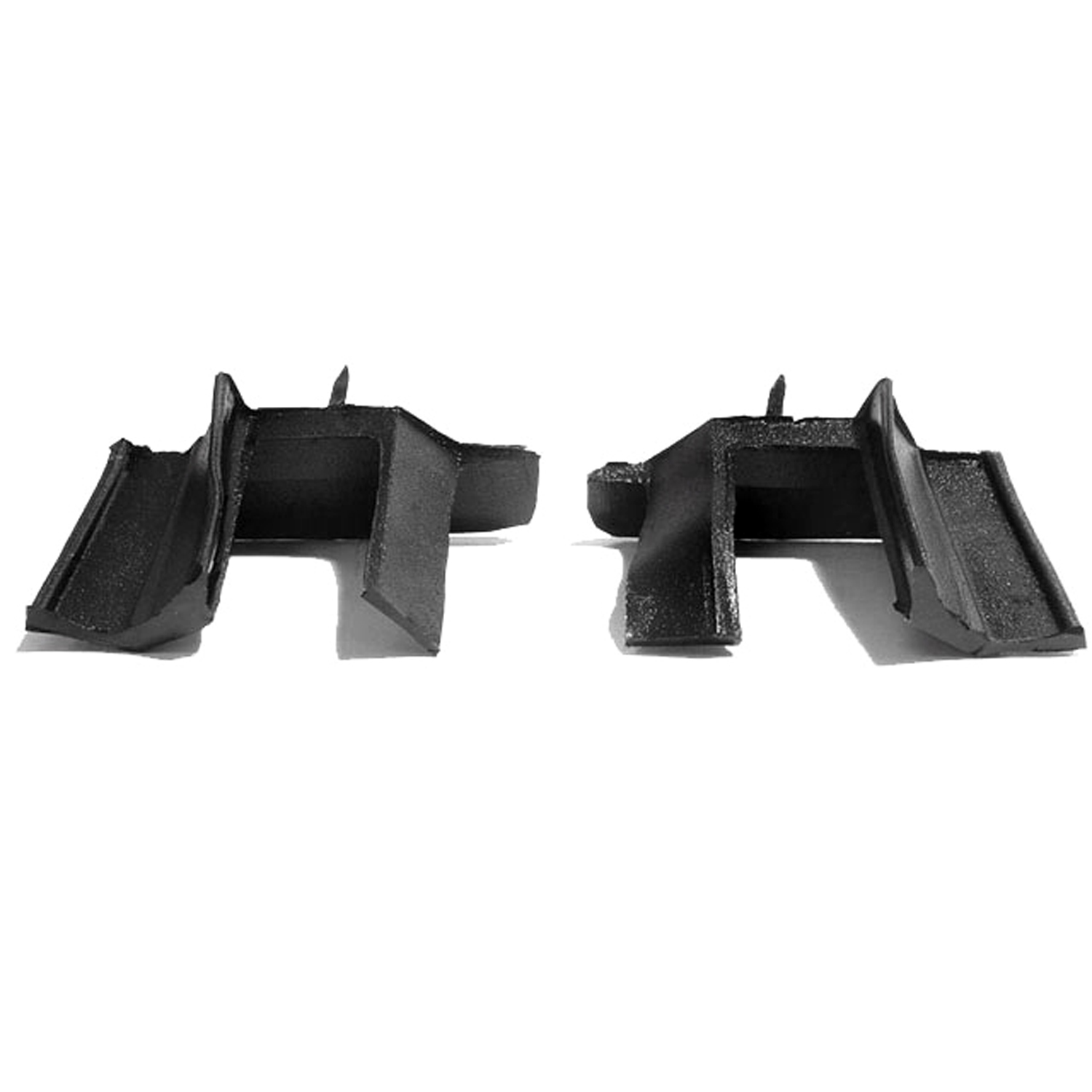 1957 Volkswagen Beetle Front Quarter Wedge Weatherseal for Convertibles-ALP 10Front Quarter Wedge Weatherseal for Convertibles. Used at back of roll-up quarter window. Pair R&L
1957 Volkswagen Beetle Front Quarter Wedge Weatherseal for Convertibles-ALP 10Front Quarter Wedge Weatherseal for Convertibles. Used at back of roll-up quarter window. Pair R&L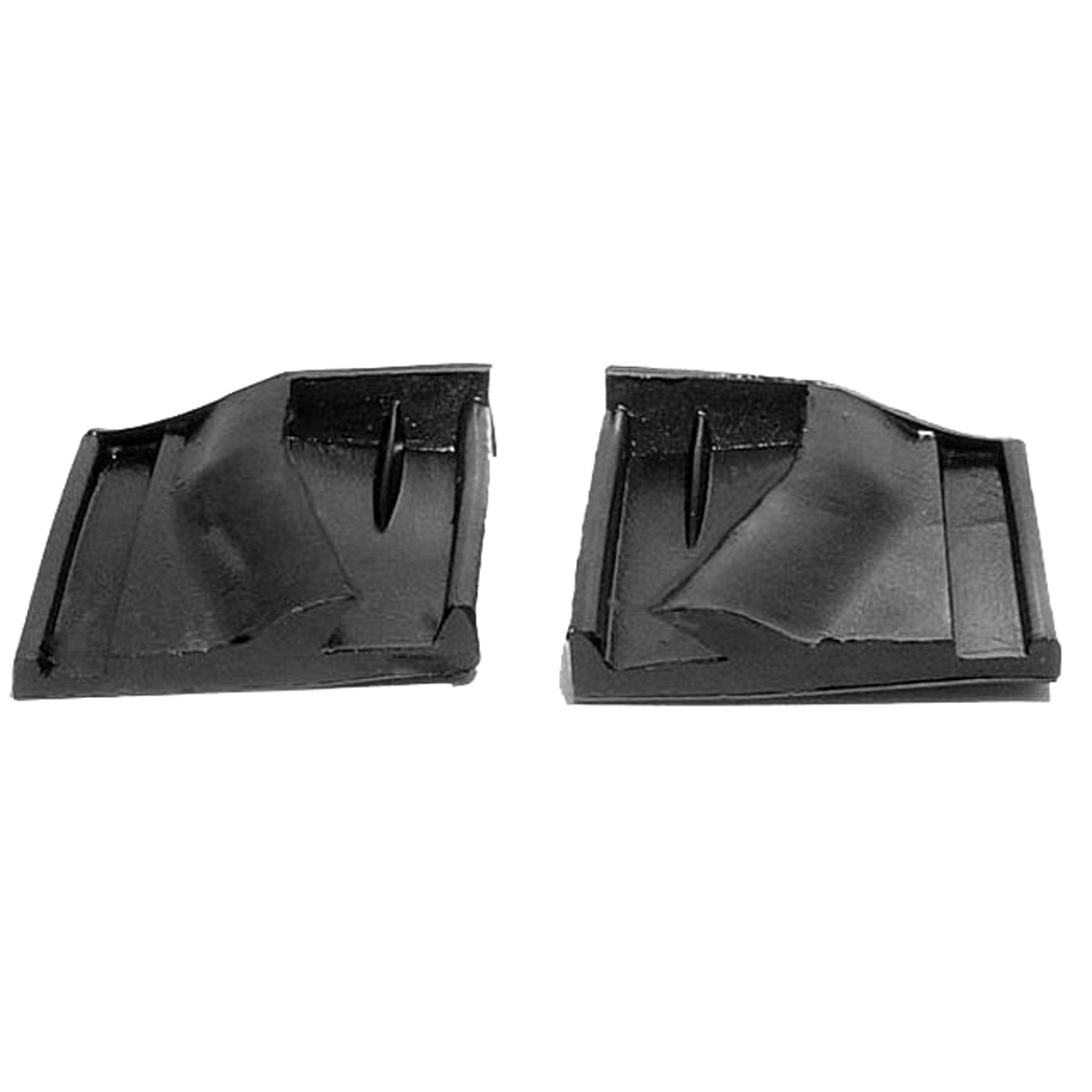 1957 Volkswagen Beetle Rear Door Wedge Weatherseal for convertibles-ALP 10-ARear Door Wedge Weatherseal for convertibles. Used behind back of roll-up quarter window. Pair R&L
1957 Volkswagen Beetle Rear Door Wedge Weatherseal for convertibles-ALP 10-ARear Door Wedge Weatherseal for convertibles. Used behind back of roll-up quarter window. Pair R&L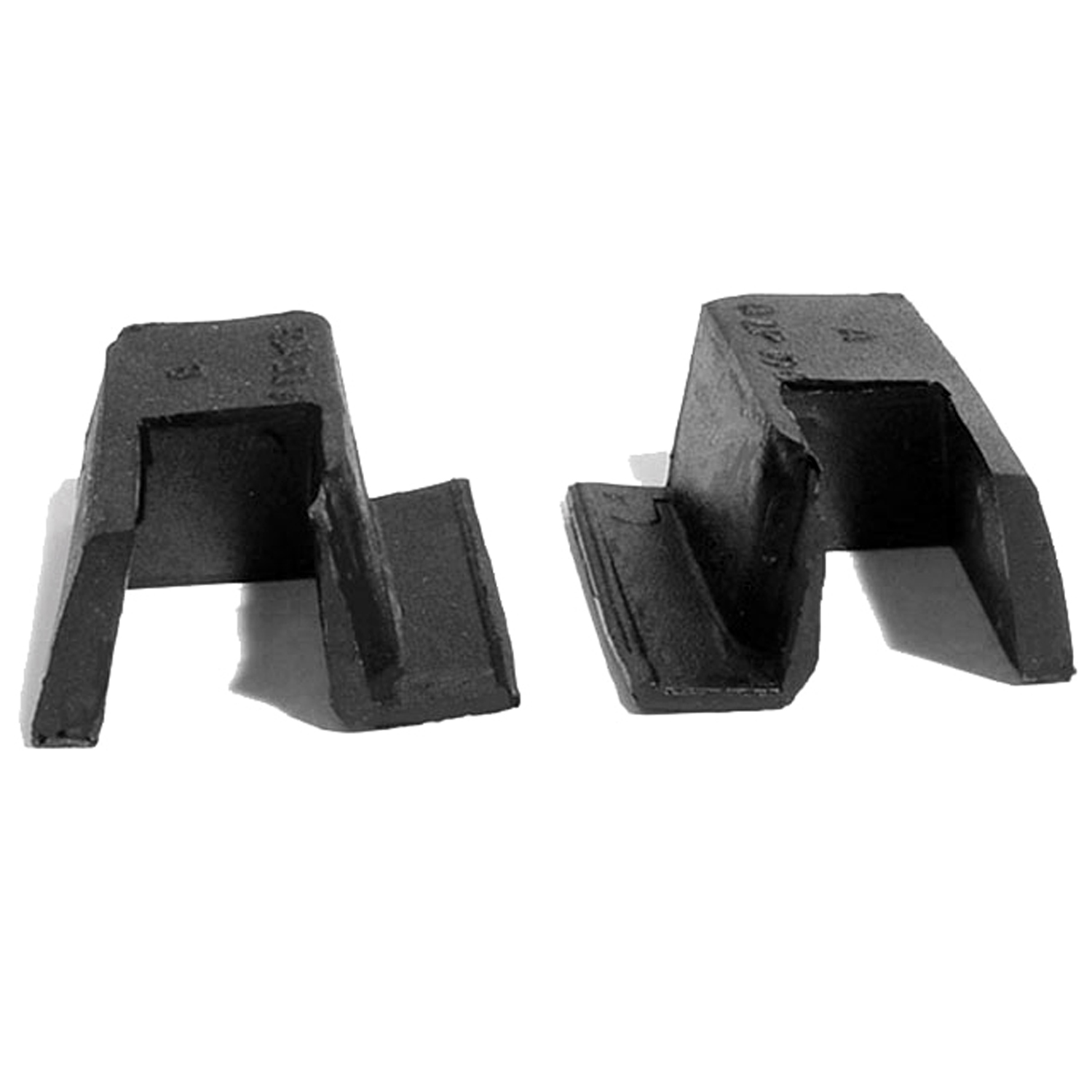 1957 Volkswagen Beetle Rear Quarter Wedge Weatherseal for Convertibles-ALP 10-BRear Quarter Wedge Weatherseal for Convertibles. Used at front of roll-up quarter window. Pair R&L
1957 Volkswagen Beetle Rear Quarter Wedge Weatherseal for Convertibles-ALP 10-BRear Quarter Wedge Weatherseal for Convertibles. Used at front of roll-up quarter window. Pair R&L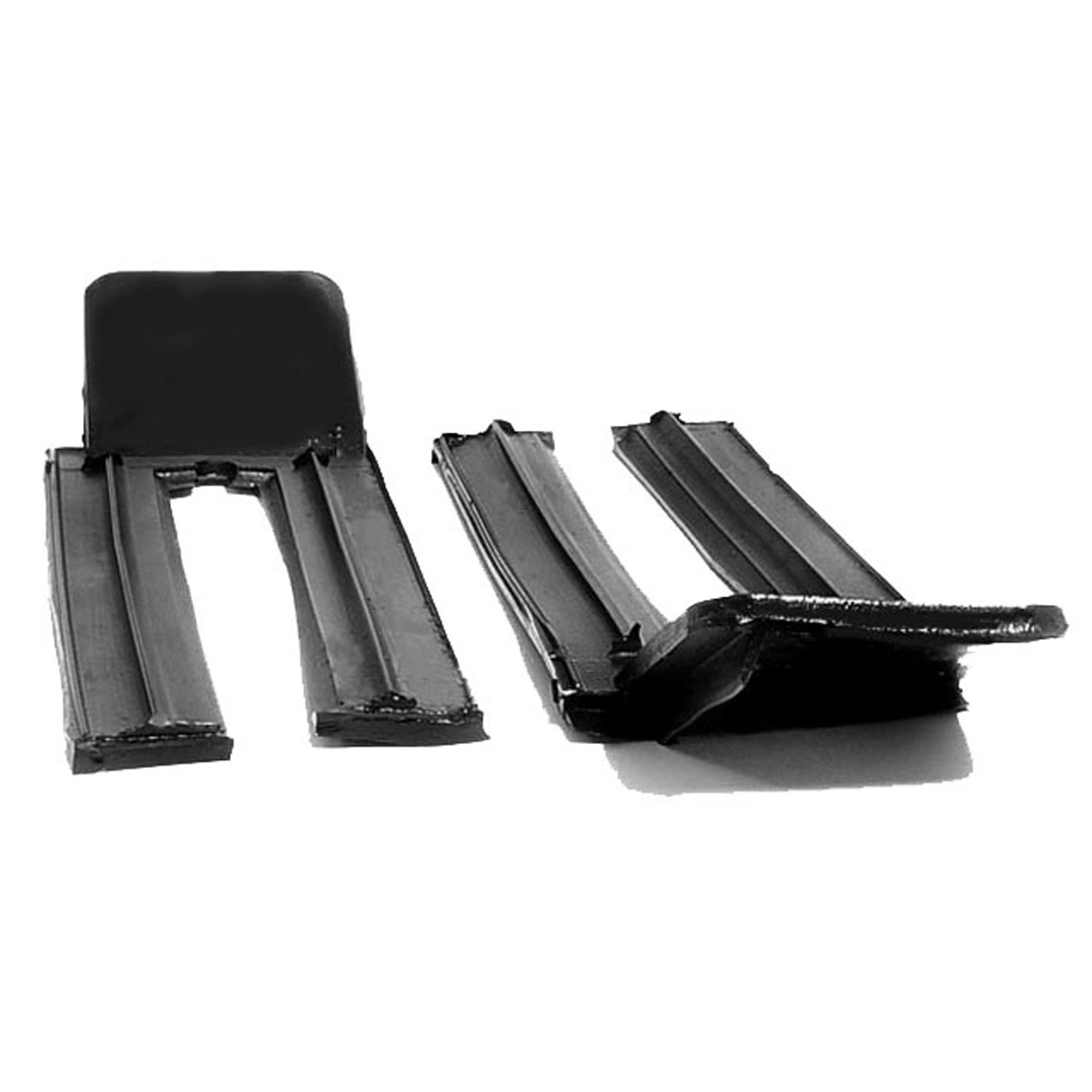 1957 Volkswagen Beetle Front Door Wedge Weatherseal for Convertibles-ALP 10-CFront Door Wedge Weatherseal for Convertibles. Used at front of vent window assembly to door. Pair R&L
1957 Volkswagen Beetle Front Door Wedge Weatherseal for Convertibles-ALP 10-CFront Door Wedge Weatherseal for Convertibles. Used at front of vent window assembly to door. Pair R&L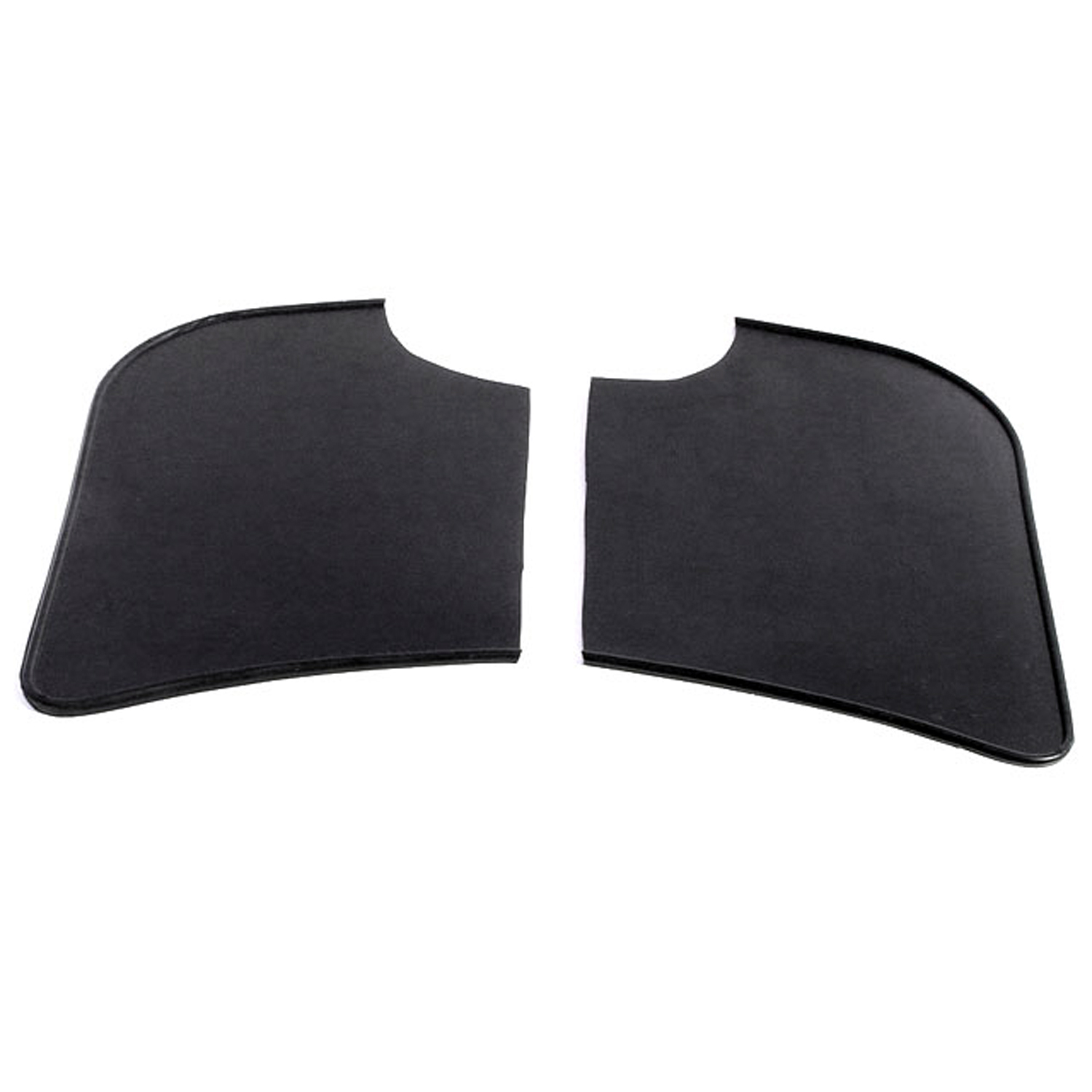 1957 Volkswagen Beetle Gravel Shields. Molded flat without metal backing plates-FS 40Gravel Shields. Molded flat without metal backing plates. Apply with contact cement. 7-5/8" long X 5-5/8" wide at top. Pair
1957 Volkswagen Beetle Gravel Shields. Molded flat without metal backing plates-FS 40Gravel Shields. Molded flat without metal backing plates. Apply with contact cement. 7-5/8" long X 5-5/8" wide at top. Pair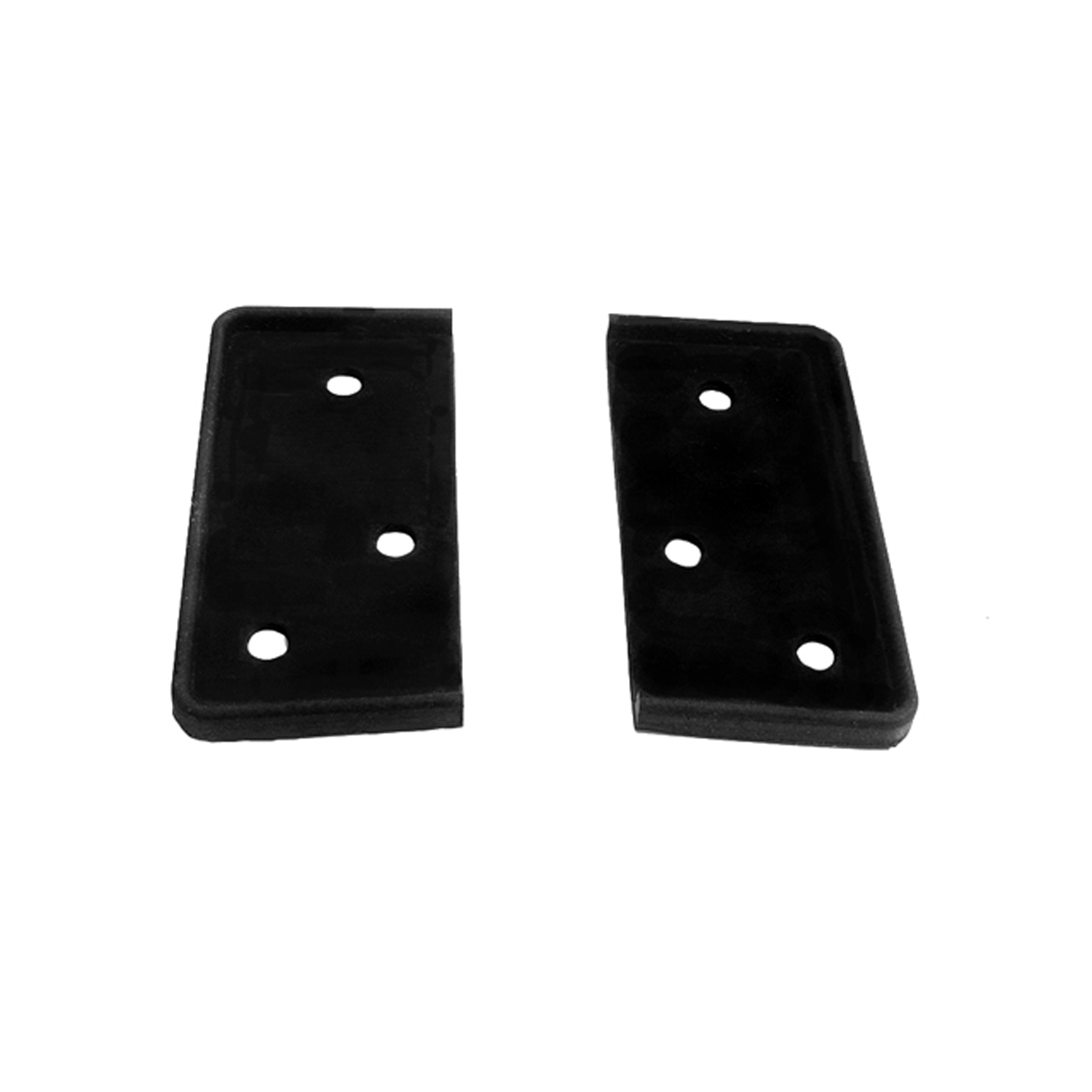 1957 Volkswagen Beetle Outside Quarter Window Seal (facing base)-MP 1501Outside Quarter Window Seal (facing base). 2-1/2" wide X 1-1/4" long. Pair R&L
1957 Volkswagen Beetle Outside Quarter Window Seal (facing base)-MP 1501Outside Quarter Window Seal (facing base). 2-1/2" wide X 1-1/4" long. Pair R&L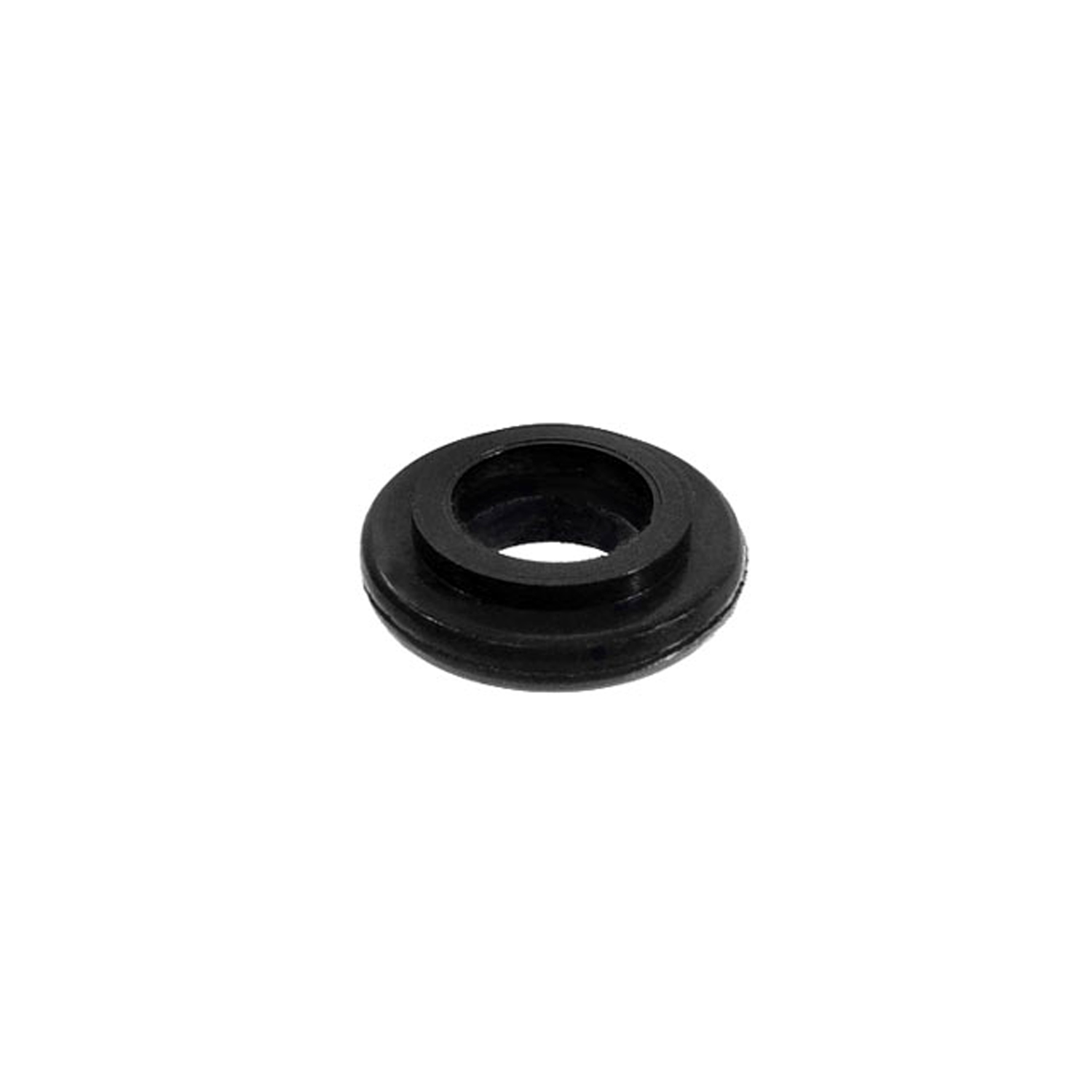 1957 Volkswagen Beetle Oil Cooler Seal. 7/16" I.D., 7/8" O.D. Each-RP 8-BOil Cooler Seal. 7/16" I.D., 7/8" O.D. Each
1957 Volkswagen Beetle Oil Cooler Seal. 7/16" I.D., 7/8" O.D. Each-RP 8-BOil Cooler Seal. 7/16" I.D., 7/8" O.D. Each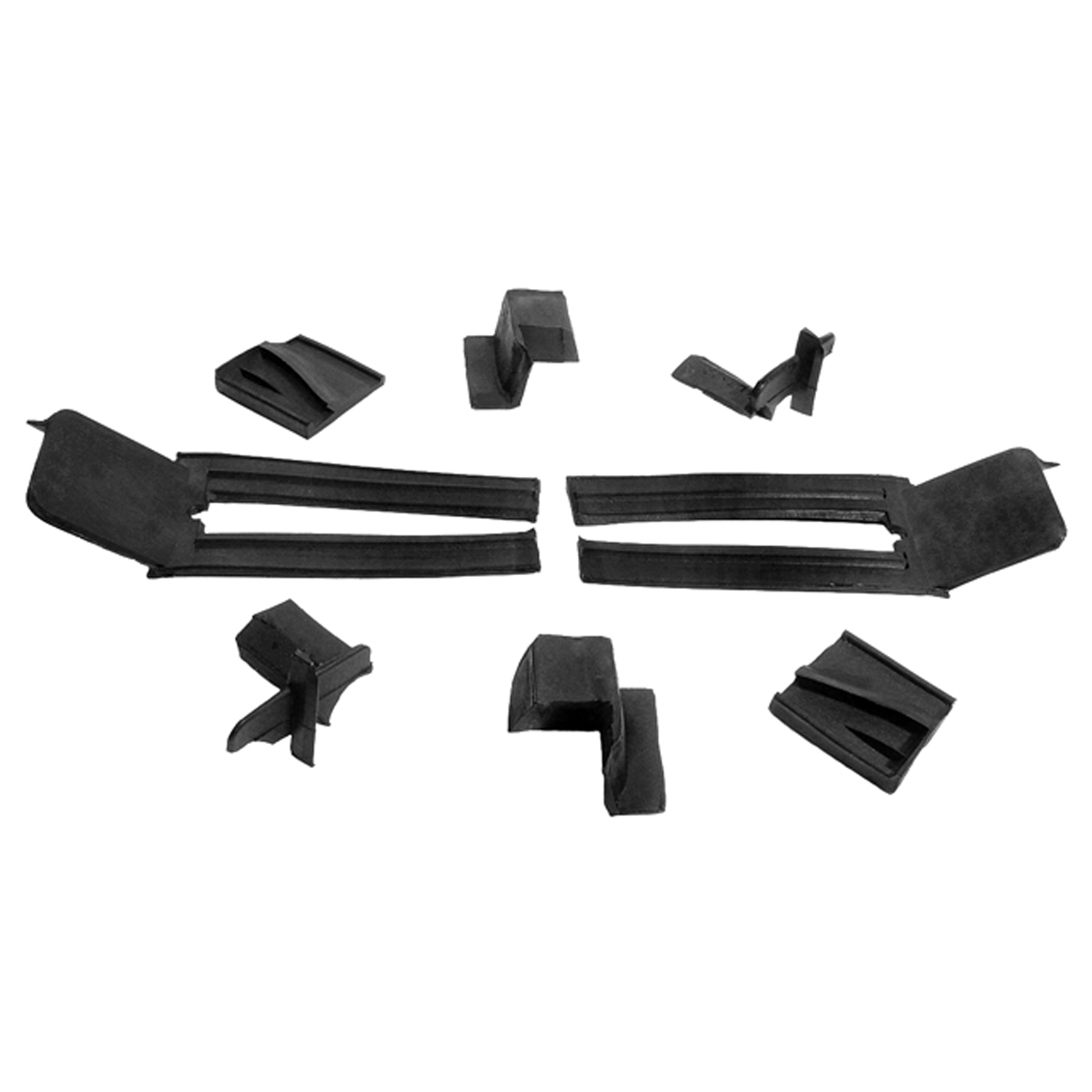 1957 Volkswagen Beetle Auxillary Window Seal Kit for Convertibles (ALP 10, ALP 10-A-WK 400Auxillary Window Seal Kit for Convertibles (ALP 10, ALP 10-A, ALP 10-B, ALP 10-C) 8-Piece Kit
1957 Volkswagen Beetle Auxillary Window Seal Kit for Convertibles (ALP 10, ALP 10-A-WK 400Auxillary Window Seal Kit for Convertibles (ALP 10, ALP 10-A, ALP 10-B, ALP 10-C) 8-Piece Kit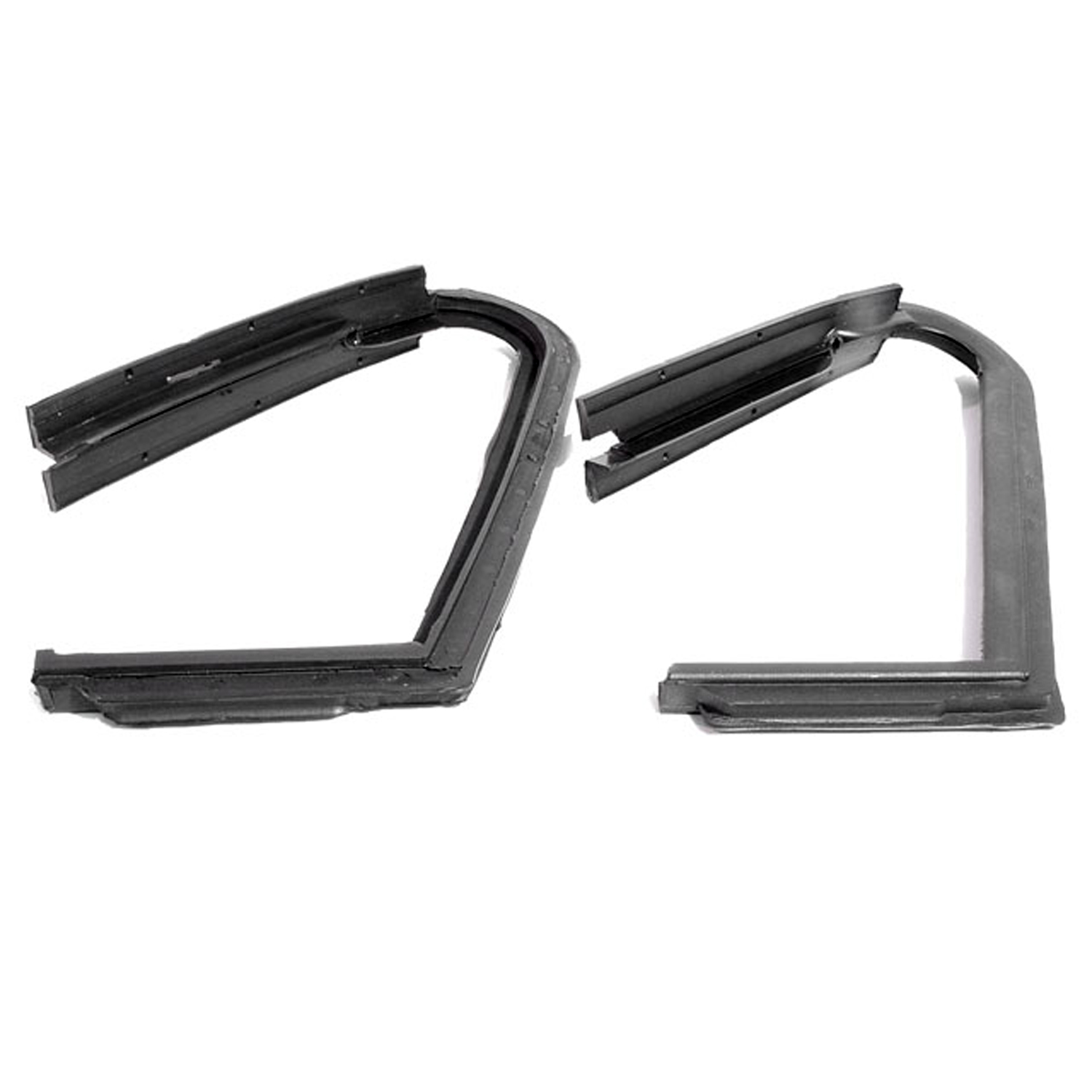 1957 Volkswagen Beetle Front Vent Window Seals, for Convertibles-WR 9800Front Vent Window Seals, for Convertibles. Molded in proper shape. Pair
1957 Volkswagen Beetle Front Vent Window Seals, for Convertibles-WR 9800Front Vent Window Seals, for Convertibles. Molded in proper shape. PairWhy Choose Metro?
For over 100 years, Metro Moulded Parts has been the pinnacle of quality in classic car restoration parts. Our commitment to precision and authenticity in every component ensures a perfect fit and an OEM-level appearance.
- Expert Craftsmanship & Quality: Each part is a testament to our dedication to reliability and perfection, crafted from original designs and thoroughly tested.
- Advanced Technology: We use cutting-edge techniques to create flawless, long-lasting parts that surpass others in performance.
- SuperSoft Sponge – The Ultimate Door Seal: Not only are our door seals 30% softer than competitors', but they're also guaranteed to never leak. They effectively reduce wind and road noise, enhancing your classic car's comfort and driving experience.
- Proudly American: Our parts are a product of American craftsmanship, made in the USA with a spirit of excellence and heritage.
- Unrivaled Warranty: We back our products with a 30-year industry-leading warranty, a testament to our confidence in their quality.
Join us in preserving the legacy of classic cars with parts that are crafted for perfection, not just made.

